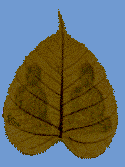Buddhism - Three Dimensions - Chan Comment 1/3
True (illusion) or illusion is “moha”, I think. Most people usually take event or thing as a truth without fact – this is an illusion, which is one of the root causes of craving/desire (tan’ha). Sometimes illusion could be treated as “reality” (ta’tha (or) ta’tha’pheap), which is most often realized via a play, a performance, a movie or the like that reflects on what happened, explains situation or event, etc. It is just like a “make-truth”. Reality has a sense of “truth”, but not permanent like the “truth” itself. Civil war for Cambodia was the reality, but is not the truth – reality lacks a sense of permanence if compared with “truth”. Tum Teav reflects the reality of Cambodian tradition in their days, but perhaps may neither be now. Reality is changing, but truth is not as “physical being, suffering and death”.
I am sorry for the length of this one. Please now let me jump to your questions:
Q1: Should we share with the public?
I entirely agree that you should.
Q2: Are the points complicated?
It is difficult for one to try to make thing simple, esp. when it comes to philosophical, spiritual, and religious concepts and practices like those in Buddhism. I think I do not find what you posted complicated. In fact there are terms that you need to explain, because they are Sanskrit or Pali.
In certain aspects, you are not specific enough, I think. You should have some details, but concise, for many aspects that you proposed (e.g. philosophical, spiritual, religious) – you should demystify/decode them briefly.
Q3: Are the points repetitive?
I do not think that they are, except the fact that the different pieces you responded to members. When you pull them together in one-go text, they would be obvious and you could remove them easily.
Q4: Are there any missing points?
I can say yes right away given the fact that Buddhism is a universal/colossal knowledge warehouse. But what you posted truly provided the basic or foundation with emphasis on “meditation / special meditation”. You gave the building blocks.
Once the text goes to the public you will also see missing points as well as when readers come back to you with questions – these would not be the missing points on your part, but in their knowledge as the public has different levels of knowledge in Buddhism. (If you want to make as an education tool, you may offer some examples of real-life issues such as nature, environment, practices, …, in related spheres, i.e. religious, philosophical, and spiritual).
Q5: Are there any contentious points?
If one takes the text “objectively”, I can say that there is any contentious point. The controversial points are that most Cambodian Buddhists do not actually practice true Buddhism – they follow Theravada Buddhism, mix Hinduism-Buddhism, mix Animism-Buddhism, … In this instance, they would not accept that what they are practicing are not Buddhism.
One of the key missing aspects is sources/references that you should have. I think this is important, since Buddhism is not something that we have just theorized. With references/sources, readers could also go for further exploration, learning, …, and you could also defend yourself.

No comments:
Post a Comment